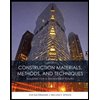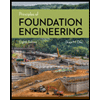Explain the following concepts related to pile foundations and use figures for illustration. 1) Define how a foundation is classified as shallow or deep, based on its width (B) and depth (D). 2) Describe the bearing mechanism of piles. 3) Explain about negative friction in pile foundations. 4) Draw the distribution of axial force on a pile where negative friction occurs. 5) Compare and contrast the relative advantages and disadvantages of steel pipe piles and precast concrete piles. 6) A pile with a diameter of 0.4 m and length of 30 m is driven into the soil ground. Find the ultimate bearing capacity of this pile considering the skin friction using Terzaghi's bearing capacity formula. Assume '=20°, c=10 kN/m², y=18 kN/m³ and f=40 kN/m². Static bearing capacity Terzaghi's bearing capacity formula taking peripheral friction into consideration is given by: Q = (a c⋅ Nc + y Dƒ N₁) · A₁ + πBfs Df where y: unit weight of soil around the pile Ap: cross-sectional area of the pile tip fs: skin friction c: cohesion of soil below the pile tip a: shape factor (for circular shape, α=1.3) D. depth of the pile B: diameter of the pile Equations for calculating ultimate bearing capacity from field tests Clayey ground (including skin friction): Q[kN] = 10cμлr² + 2 πr Dcμ where r: radius of the pile (m), cu: undrained shear strength (shear strength) (kN/m²), D: depth of the pile (m) Sandy ground (including skin friction): Q[kN] where N: N value for the soil at the pile tip Ap: cross-sectional area of the pile tip (m²) . = 400N A₂+2лÑ As (Meyerhof's equation) As: surface area of the pile upon which skin friction acts (m²) Ñ: average N value for the soils along the whole length of the pile
Explain the following concepts related to pile foundations and use figures for illustration. 1) Define how a foundation is classified as shallow or deep, based on its width (B) and depth (D). 2) Describe the bearing mechanism of piles. 3) Explain about negative friction in pile foundations. 4) Draw the distribution of axial force on a pile where negative friction occurs. 5) Compare and contrast the relative advantages and disadvantages of steel pipe piles and precast concrete piles. 6) A pile with a diameter of 0.4 m and length of 30 m is driven into the soil ground. Find the ultimate bearing capacity of this pile considering the skin friction using Terzaghi's bearing capacity formula. Assume '=20°, c=10 kN/m², y=18 kN/m³ and f=40 kN/m². Static bearing capacity Terzaghi's bearing capacity formula taking peripheral friction into consideration is given by: Q = (a c⋅ Nc + y Dƒ N₁) · A₁ + πBfs Df where y: unit weight of soil around the pile Ap: cross-sectional area of the pile tip fs: skin friction c: cohesion of soil below the pile tip a: shape factor (for circular shape, α=1.3) D. depth of the pile B: diameter of the pile Equations for calculating ultimate bearing capacity from field tests Clayey ground (including skin friction): Q[kN] = 10cμлr² + 2 πr Dcμ where r: radius of the pile (m), cu: undrained shear strength (shear strength) (kN/m²), D: depth of the pile (m) Sandy ground (including skin friction): Q[kN] where N: N value for the soil at the pile tip Ap: cross-sectional area of the pile tip (m²) . = 400N A₂+2лÑ As (Meyerhof's equation) As: surface area of the pile upon which skin friction acts (m²) Ñ: average N value for the soils along the whole length of the pile
Fundamentals of Geotechnical Engineering (MindTap Course List)
5th Edition
ISBN:9781305635180
Author:Braja M. Das, Nagaratnam Sivakugan
Publisher:Braja M. Das, Nagaratnam Sivakugan
Chapter18: Pile Foundation
Section: Chapter Questions
Problem 18.14P: A steel pile (H-section; HP 360 1.491; see Table 18.1) is driven into a layer of sandstone The...
Related questions
Question
![Explain the following concepts related to pile foundations and use figures for illustration.
1) Define how a foundation is classified as shallow or deep, based on its width (B) and depth (D).
2) Describe the bearing mechanism of piles.
3) Explain about negative friction in pile foundations.
4) Draw the distribution of axial force on a pile where negative friction occurs.
5) Compare and contrast the relative advantages and disadvantages of steel pipe piles and precast concrete piles.
6) A pile with a diameter of 0.4 m and length of 30 m is driven into the soil ground. Find the ultimate bearing capacity
of this pile considering the skin friction using Terzaghi's bearing capacity formula. Assume '=20°, c=10 kN/m²,
y=18 kN/m³ and f=40 kN/m².
Static bearing capacity
Terzaghi's bearing capacity formula taking peripheral friction into consideration is given by:
Q = (a c⋅ Nc + y Dƒ N₁) · A₁ + πBfs Df
where
y: unit weight of soil around the pile
Ap: cross-sectional area of the pile tip
fs: skin friction
c: cohesion of soil below the pile tip
a: shape factor (for circular shape, α=1.3)
D. depth of the pile
B: diameter of the pile
Equations for calculating ultimate bearing capacity from field tests
Clayey ground (including skin friction): Q[kN] = 10cμлr² + 2 πr Dcμ
where r: radius of the pile (m), cu: undrained shear strength (shear strength) (kN/m²), D: depth of the pile (m)
Sandy ground (including skin friction): Q[kN]
where
N: N value for the soil at the pile tip
Ap: cross-sectional area of the pile tip (m²)
.
= 400N A₂+2лÑ As (Meyerhof's equation)
As: surface area of the pile upon which skin friction acts (m²)
Ñ: average N value for the soils along the whole length of the pile](/v2/_next/image?url=https%3A%2F%2Fcontent.bartleby.com%2Fqna-images%2Fquestion%2F16c9709a-f291-4ea4-acf6-02d313e8dba5%2Fa02d73d3-fb5f-4b86-bcf9-9dbcf15fc07e%2F78x0z6o_processed.jpeg&w=3840&q=75)
Transcribed Image Text:Explain the following concepts related to pile foundations and use figures for illustration.
1) Define how a foundation is classified as shallow or deep, based on its width (B) and depth (D).
2) Describe the bearing mechanism of piles.
3) Explain about negative friction in pile foundations.
4) Draw the distribution of axial force on a pile where negative friction occurs.
5) Compare and contrast the relative advantages and disadvantages of steel pipe piles and precast concrete piles.
6) A pile with a diameter of 0.4 m and length of 30 m is driven into the soil ground. Find the ultimate bearing capacity
of this pile considering the skin friction using Terzaghi's bearing capacity formula. Assume '=20°, c=10 kN/m²,
y=18 kN/m³ and f=40 kN/m².
Static bearing capacity
Terzaghi's bearing capacity formula taking peripheral friction into consideration is given by:
Q = (a c⋅ Nc + y Dƒ N₁) · A₁ + πBfs Df
where
y: unit weight of soil around the pile
Ap: cross-sectional area of the pile tip
fs: skin friction
c: cohesion of soil below the pile tip
a: shape factor (for circular shape, α=1.3)
D. depth of the pile
B: diameter of the pile
Equations for calculating ultimate bearing capacity from field tests
Clayey ground (including skin friction): Q[kN] = 10cμлr² + 2 πr Dcμ
where r: radius of the pile (m), cu: undrained shear strength (shear strength) (kN/m²), D: depth of the pile (m)
Sandy ground (including skin friction): Q[kN]
where
N: N value for the soil at the pile tip
Ap: cross-sectional area of the pile tip (m²)
.
= 400N A₂+2лÑ As (Meyerhof's equation)
As: surface area of the pile upon which skin friction acts (m²)
Ñ: average N value for the soils along the whole length of the pile
AI-Generated Solution
Unlock instant AI solutions
Tap the button
to generate a solution
Recommended textbooks for you

Fundamentals of Geotechnical Engineering (MindTap…
Civil Engineering
ISBN:
9781305635180
Author:
Braja M. Das, Nagaratnam Sivakugan
Publisher:
Cengage Learning

Principles of Foundation Engineering (MindTap Cou…
Civil Engineering
ISBN:
9781337705028
Author:
Braja M. Das, Nagaratnam Sivakugan
Publisher:
Cengage Learning

Construction Materials, Methods and Techniques (M…
Civil Engineering
ISBN:
9781305086272
Author:
William P. Spence, Eva Kultermann
Publisher:
Cengage Learning

Fundamentals of Geotechnical Engineering (MindTap…
Civil Engineering
ISBN:
9781305635180
Author:
Braja M. Das, Nagaratnam Sivakugan
Publisher:
Cengage Learning

Principles of Foundation Engineering (MindTap Cou…
Civil Engineering
ISBN:
9781337705028
Author:
Braja M. Das, Nagaratnam Sivakugan
Publisher:
Cengage Learning

Construction Materials, Methods and Techniques (M…
Civil Engineering
ISBN:
9781305086272
Author:
William P. Spence, Eva Kultermann
Publisher:
Cengage Learning

Principles of Foundation Engineering (MindTap Cou…
Civil Engineering
ISBN:
9781305081550
Author:
Braja M. Das
Publisher:
Cengage Learning

Principles of Geotechnical Engineering (MindTap C…
Civil Engineering
ISBN:
9781305970939
Author:
Braja M. Das, Khaled Sobhan
Publisher:
Cengage Learning